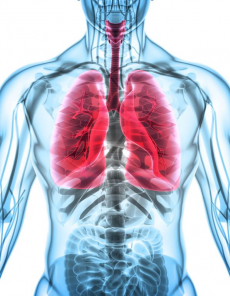

Cystic Fibrosis: A major advance in the scientific studies for the molecular mechanisms, symptoms and treatments
The average lifespan for a person with cystic fibrosis is sadly 25-30 years and is one of the most recurrent genetically inherited diseases. It is prevalent in Caucasians, affecting 1 in 3000 new-borns in Europe.
Defected CFTR proteins can arise from various types of mutation; there are over 1500 possible types. Classification of mutation types distinguishes the effect the mutation has on the CFTR protein. There are 6 classes of mutation; Class I, II, and III lead to the absence of CFTR or significant depletion of useful CFTR. Class I mutations result in CFTR not being synthesised, by inhibiting mRNA transcription. Class II result in the protein being inadequately processed, preventing localization. Class III mutations result in CFTR not being regulated. Class IV mutations produce CFTR that shows abnormal conductance; thus, the protein is still functional. Class V mutations also lead to CFTR that is partially defective and so chloride ion transport ability is reduced leading to a splicing defect. Following a function CFTR protein being present, class VI mutations result in accelerated degradation.
Regular mutations are ΔF508, G542X, G551D, N1303K, W1282X, with the rest accounting to 27.5% of cystic fibrosis cases. ΔF508 is the most common mutation of CFTR caused by the deletion of phenylalanine in the 508th position, producing a class II mutation. ΔF508 accounts for two thirds of cystic fibrosis case causes in North America and northern Europe.
At the 507th position ATC nucleotides will be found normally, this forms the template for the isoleucine mRNA codon AUC. The 508th position should normally have TTT which forms the UUU (phenylalanine) template. In cystic fibrosis, the C-G pair from position 507 and the T-A from position 508 are deleted, as a result the sequence ATT forms at position 507. The mRNA AUU forms, this is also an isoleucine codon, thus position 507 has the correct amino acid but phenylalanine is deleted at position 508. Deletion of phenylalanine impairs apprehended as to why this causes protein misfolding. The mutant protein cannot traffic out of the endoplasmic reticulum and so the proteasome degrades it. Absence of CFTR protein in the membrane, caused by an organism having two complements of the mutation, inhibits indispensable ion transport.
Mutations that result in premature stop codons produce truncated proteins whilst other mutations can produce CFTR that do not use ATP functionally, proteins that limit ion flow and sometimes not enough CFTR is produced. If CFTR cannot function correctly, chloride ions will accumulate at high levels in the intracellular space and sodium ion movement regulation will be limited. This reverses the normal osmotic gradient, and depletes the concentration of ions present in the airway surface liquid.
There are several theories as to how the defective gene causes the clinical effects. The low volume hypothesis proposes that symptoms are as a result of the dysfunctional CFTR gene producing ion channels that influence a high concentration of sodium ions in the airways.
Image: https://aridispharma.com/cystic-fibrosis/

0 Comment:
Be the first one to comment on this article.